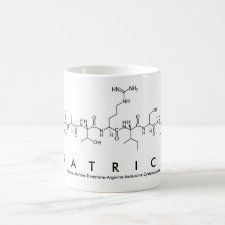
Authors: Bongaers E, Alenus J, Horemans F, Weustenraed A, Lutsen L, Vanderzande D, Cleij TJ, Troost FJ, Brummer RJ, Wagner P
Article Title: A MIP-based biomimetic sensor for the impedimetric detection of histamine in different pH environments.
Publication date: 2010
Journal: physica status solidi (a)
Volume: 207
Issue: (4)
Page numbers: 837-843.
DOI: 10.1002/pssa.200983307
Abstract: The development of novel biosensors is a rapidly growing field. Substituting the biological receptor layer from the biosensor with a synthetic receptor opens the door for the development of biomimetic sensors that are chemically and physically inert, as opposed to the sensors containing biological recognition elements. Using molecularly imprinted polymers (MIPs) the specificity and affinity of biological receptors can be mimicked. In addition, a MIP-based sensor can measure in harsh environments. Histamine occurs in harsh environments in food and bodily fluids and is chosen as the target molecule for impedimetric detection. When 10 nM histamine is present in pH neutral environments, the impedance increases 45% with respect to the impedance of the sensor without histamine. Specificity is tested with respect to histidine. The influence of the pH on the performance of the sensor is tested. In a pH range of pH 5-12 the MIPs are stable, although they exhibit a varying degree of protonation. The same holds true for the target molecule of which the protonation also varies with the pH of the solution. It is shown that the pH dependent degree of protonation of both the MIP and the histamine has a large impact on the binding of histamine to the nanocavity in the MIP. Hence, the detection of histamine by a MIP-based sensor is affected by the pH of the solution
Template and target information: histamine
Author keywords: biosensor, electrochemical sensors, Biomaterials



Join the Society for Molecular Imprinting

New items RSS feed
Sign-up for e-mail updates:
Choose between receiving an occasional newsletter or more frequent e-mail alerts.
Click here to go to the sign-up page.
Is your name elemental or peptidic? Enter your name and find out by clicking either of the buttons below!
Other products you may like:
 MIPdatabase
MIPdatabase









